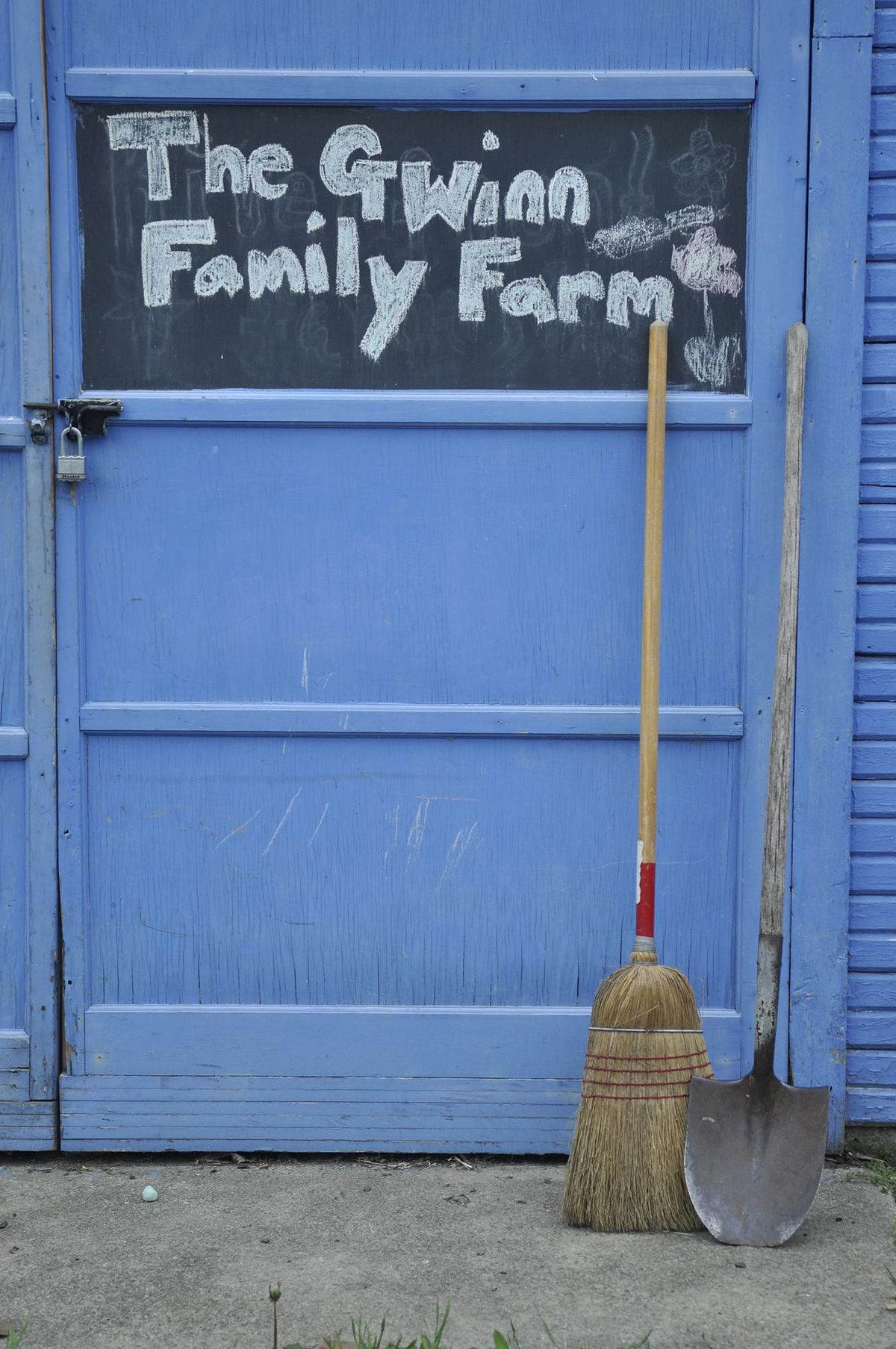Personal Foodstory: In Emily Gwinn’s garden, hope grows eternal

My neighbor in West Central presses her own grape juice. I will repeat: presses her own grape juice.
She also makes mayonnaise from scratch, whips up three-layered cakes and has experimented with keifer.
She is my food idol.
When I was pregnant with my second daughter, platefuls of hot, creamy stroganoff, spicy curry, and corn fritters would arrive at my door. I would send back the plates sad and empty.
I’m impressionable by nature. I get easily inspired to try new things, and it wasn’t long after a freshly baked loaf of wheat bread came steaming through my front door that I set my sights on experimenting in my own kitchen.
I’ve never been a scratch-cook.
While my own mother has never made a bad dish, her secret ingredients are the time-saving Bisquick, Yashimoto’s teriyaki sauce and, on occasion, Campbell’s Cream of Mushroom Soup. While there’s nothing wrong with these delicious kitchen-helpers, I quickly learned that my neighbor wouldn’t touch a pre-made sauce, let alone shop the aisles of Trader Joe’s.
“Everything they have I can make in my own kitchen, and better,” she told me once.
I was in awe.
I am a hack-cook. My go-to dinners consist of frozen pizza, pre-made tortellini in pre-made pesto and bags of pre-washed lettuce. While delicious and convenient for a working mom, it was time for me to test my own chef skills. I spent hours drooling over my favorite foodie shows – “A Chef’s Life,” “Top Chef,” “America’s Test Kitchen” – but executing pizza dough from scratch always left me flabbergasted.
I was ready to cut my teeth.
A year after renting the house next to my generous neighbor, my family decided to purchase a home a few blocks away with a small urban garden attached to the property. This included six raised beds, a compost heap and our very own cob oven. I believed the property, once a community garden, would become our source of fresh produce, ready for experimentation in my new home-chef kitchen.
In my mind, fresh ingredients would populate every meal, and my dinners would be created from scratch with fresh, organically grown greens. That first spring we planted cauliflower, cucumbers, tomatoes and lettuce. We understood this first year was really a test of the soil, to see what would grow, and how would the afternoon light affect our strawberries. I was ready to test my culinary skills as well.
My husband is a much better gardener than me, but somewhere between the mulching, composting, weeding and thinning, our garden grew out of control. I was in no way prepared for the canning, bottling and stewing needed to preserve so much produce.
By fall, our arugula bolted and our broccoli grew into a small forest, erupting with the most beautiful yellow flowers. Less ended up on our plates than into our compost bin. We learned our soil is sandy, and needs more organic matter. The tomatoes need a little song and dance.
Never plant more than 10 cucumber seedlings unless you have a good sense of humor (or are prepared to pickle at a moment’s notice), and carrots really do need to be thinned. Early.
I learned some valuable lessons about cooking from our garden, too. Washing delicate lettuce is a true test of perseverance (even after three cycles in my salad-spinner, I would still crunch down on errant sand.) Steamed purple cauliflower will delight any small child.
I also learned that when placed on top of homemade dough, and fired in a hot cob oven, fresh basil, tomato and garlic from the garden only need the slightest drizzle of olive oil to complement. I learned to hide the ripest strawberries from my dog, and that my youngest likes fresh grapes right off the vine.
While I’m not quite a scratch-cook yet, I can be a really good hack-cook while perfecting the chef in me – and the pre-made pesto at Costco will always be as delicious as my own.
This spring as our garden began to thaw from the long winter, I felt both a panic and excitement as I looked at the raw, brown soil. A fresh start. That is the fun of both gardening and cooking. If your dough doesn’t rise, you can start again. Plant the wrong crop one season, there’s another season just ahead.
Spinach Pesto
Adapted from “New Recipes from Moosewood Restaurant”
4 cups firmly packed fresh spinach (about 5 ounces)
1/2 cup chopped fresh parsley
1/3 cup basil
1/2 lemon, juiced
1 cup olive oil
1/2 cup pine nuts or chopped almonds or walnuts
3/4 cup coarsely grated Parmesan cheese (2 oz) (omit or replace with nutritional yeast)
1/2 cup chopped fresh parsley
2 garlic cloves, minced
Wash and drain the spinach. Remove only the large stems. In a blender or food processor, blend half of the spinach with all of the lemon juice and half of the oil. Add the rest of the ingredients and blend until smooth. Use as topping for pizza or toss with pasta.
Note: If you have time, soak the basil in the olive oil 1/2 hour before starting the recipe.
Cilantro Pesto
Adapted from “The Moosewood Restaurant Kitchen Garden”
1/3 cup almonds
2 big cloves garlic
Salt and pepper, to taste
1 cup cilantro leaves
1 cup parsley leaves
1 fresh jalapeño, seeded and chopped
2 tablespoon fresh lime juice
1/4 cup olive oil
Grind the almonds, garlic, salt and pepper in a food processor until well ground. Add the cilantro, parsley, jalapeno, lime juice, and puree, with about 1/3 of the olive oil. Add the rest of the olive oil in thirds and puree. This pesto is great over burritos or on pizza.
Note: For an alternative, omit jalapeño and lime juice, then use walnuts instead of almonds. Toss with favorite pasta.